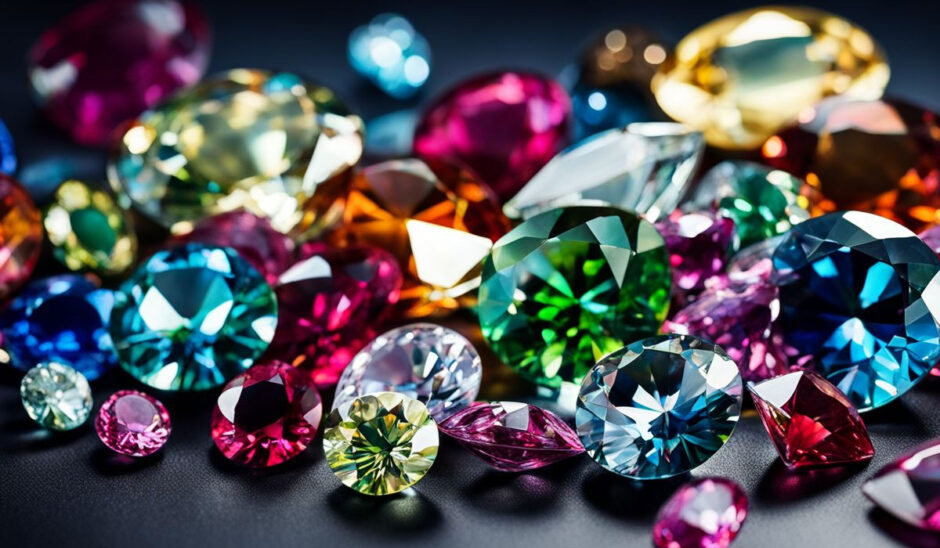Modern Alternatives to Traditional Diamonds: Why Lab-Grown Diamonds Are the Future

For centuries, diamonds have symbolized eternal love, luxury, and prestige. The phrase “a diamond is forever” became so deeply embedded in our culture that questioning the source of these precious stones seemed almost blasphemous. Today, however, a new generation of consumers is rewriting the diamond industry’s rulebook, demanding transparency, sustainability, and ethical sourcing without compromising on beauty or quality.
The traditional diamond industry faces mounting scrutiny over environmental destruction, human rights violations, and ethical concerns. Meanwhile, technological advances have created compelling alternatives that are forcing both consumers and industry leaders to reconsider what makes a diamond truly valuable.
The Environmental and Ethical Crisis
Traditional diamond mining carries a heavy environmental cost. According to research from the U.S. Geological Survey, extracting a single carat requires removing 200 to 400 million times as much rock. For every carat mined, nearly 100 square feet of land is disturbed and more than 5,798 pounds of mineral waste is created.
The carbon footprint is equally concerning. Studies show that producing one polished carat of mined diamond generates approximately 160 kg of CO2 emissions, while also producing more than 30 pounds of sulfur oxide. The mining process disrupts ecosystems, contaminates water sources through acid mine drainage, and poses significant health risks to workers.
Beyond environmental impact, the industry grapples with persistent ethical challenges. Despite the Kimberley Process, designed to prevent conflict diamonds from entering global markets, concerns about labor conditions, human rights violations, and the funding of armed conflicts continue to plague certain mining regions.
What Are Modern Diamond Alternatives?
Lab-Grown Diamonds: Science Meets Luxury
Lab-grown diamonds represent the most significant innovation in the diamond industry since cutting techniques were perfected. These stones are chemically, physically, and optically identical to mined diamonds—they are real diamonds, just created in controlled laboratory environments rather than deep underground over billions of years.
Two Primary Production Methods:
High Pressure High Temperature (HPHT): This method replicates the natural formation process by subjecting carbon to pressures of 5-6 GPa (equivalent to depths of 150-190 km within Earth) and temperatures of 1,300-1,600°C.
Chemical Vapor Deposition (CVD): This technique places diamond seeds in sealed chambers filled with carbon-rich gases, heated to around 800°C, allowing carbon atoms to gradually build up layer by layer.
Both methods can produce gem-quality diamonds in weeks rather than billions of years, with identical properties to their mined counterparts.
Other Ethical Gemstone Options
Beyond lab-grown diamonds, consumers can choose from various sustainable alternatives:
- Recycled and vintage diamonds: Giving new life to existing stones eliminates mining impact entirely
- Alternative gemstones: Moissanite, lab-grown sapphires, and emeralds offer beauty without mining concerns
- Ethical sourcing: Canadian diamonds and stones from certified conflict-free suppliers
The Numbers Tell the Story: Why People Choose Alternatives
The shift toward lab-grown diamonds is accelerating rapidly. Market data reveals compelling trends:
Market Growth
- Lab-grown diamond market share reached 14.3% globally in 2023 and is projected to exceed 21% by 2025
- The market is expected to grow from $25.89 billion in 2024 to $74.45 billion by 2032, exhibiting a 14.11% CAGR
- Bain & Company predicts lab-grown diamonds could comprise 25-30% of global diamond sales by 2030
Consumer Demographics
- 70% of millennials express interest in purchasing lab-grown diamonds for engagement rings
- One-third of fine jewelry purchases could be influenced by ESG factors by 2025, according to McKinsey research
- 42% of Gen Z diamond purchases are made online, demonstrating comfort with digital diamond shopping
Environmental Advantages
When produced with renewable energy, the environmental benefits are dramatic:
- Carbon emissions: 0.028 grams CO2 per carat (lab-grown with clean energy) vs. 57 kg per carat (mined)
- Water usage: 0.07 m³ per carat vs. 0.48 m³ per carat
- Mineral waste: 0.0006 tonnes per carat vs. 2.63 tonnes per carat
- Land disruption: 0.07 square feet per carat vs. 100 square feet per carat
Economic Benefits
- Lab-grown diamonds cost 40-60% less than equivalent mined stones
- Larger stones become accessible to middle-income consumers
- Greater design flexibility for jewelry creators due to cost efficiencies
Celebrity Endorsement and Cultural Shift
High-profile adoptions are normalizing lab-grown diamonds in mainstream culture. Emma Watson, Leonardo DiCaprio (who invested in a lab-diamond startup), Alia Bhatt, and Penélope Cruz have publicly chosen lab-grown diamonds, using their platforms to educate millions about sustainable alternatives.
“In 2025, lab grown diamonds are not just stylish—they’re making red carpets greener,” notes industry analysis. “More celebrities are proudly wearing these lab created diamonds to events, and the message is clear: it’s cool to care.”
Tips for Choosing Quality Lab-Grown Diamonds
Certification and Quality
- Look for stones certified by reputable organizations like GIA (Gemological Institute of America) or IGI (International Gemological Institute)
- Lab-grown diamonds are graded using the same 4Cs criteria as mined diamonds: Cut, Color, Clarity, and Carat
- Ensure proper disclosure—retailers must clearly identify lab-grown diamonds as such
Energy Source Verification
- Research the producer’s energy sources—renewable energy significantly reduces environmental impact
- Look for carbon-neutral certifications from third-party organizations
- Some companies, like Diamond Foundry, produce exclusively with solar power
Design Trends and Styling
Current trends favor:
- Colored stones: Lab-grown pink, blue, and yellow diamonds offer luxury at accessible prices
- Larger center stones: Cost savings enable bigger carat weights
- Mixed metals: Rose gold, white gold, and platinum settings complement lab-grown stones perfectly
- Sustainable luxury: Complete ethical supply chains from metal to stone
Questions to Ask Retailers
- What is the exact source and production method?
- Can you provide certification details?
- What are the energy sources used in production?
- Do you offer traceability documentation?
- What is your return and trade-in policy?
Industry Transformation and Future Outlook
Major jewelry retailers are adapting quickly. Pandora launched lab-grown diamond collections globally, while traditional luxury houses increasingly offer lab-grown options alongside natural stones. The rise of e-commerce has particularly benefited lab-grown diamonds, with online jewelry sales growing at 9-12% CAGR from 2019 to 2025.
Technology continues advancing, with artificial intelligence now enhancing production efficiency and quality assessment. Researchers are developing more energy-efficient production methods, making lab-grown diamonds increasingly sustainable.
The geographic shift is also notable. Asia Pacific dominates production with 33.17% market share, driven by manufacturing capabilities in China and India, while North America leads consumption due to higher disposable incomes and environmental consciousness.
Conclusion: The Smart Choice for Modern Consumers
The evidence overwhelmingly supports lab-grown diamonds as the future of the industry. They offer identical beauty and quality to mined stones while addressing the environmental, ethical, and economic concerns driving modern consumer choices.
For couples planning engagements, fashion enthusiasts seeking luxury accessories, or anyone valuing both beauty and conscience, modern diamond alternatives represent the optimal convergence of innovation, sustainability, and style.
As technology continues improving and production scales increase, lab-grown diamonds are positioned to become not just alternatives to traditional stones, but the preferred choice for conscious consumers worldwide. In an era where every purchase is a vote for the kind of world we want to create, choosing modern diamond alternatives isn’t just smart—it’s the future.
The question isn’t whether lab-grown diamonds will transform the industry, but how quickly traditional mining will adapt to remain relevant in an increasingly conscious marketplace. For today’s consumers, the choice is clear: why settle for conflict when you can have conscience, sustainability, and stunning beauty all in one perfect stone?


